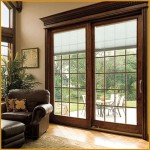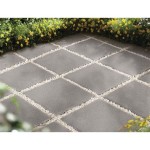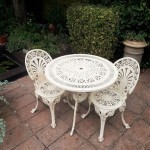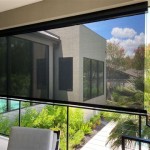Paver Patio Ideas With Fire Pit: A Comprehensive Guide
A paver patio with a fire pit represents a significant enhancement to any outdoor living space. This combination creates a focal point for relaxation, entertainment, and extending the usability of outdoor areas well beyond the typical warm-weather months. Choosing the right pavers, designing the layout, and integrating a fire pit requires careful consideration of various factors, including budget, space limitations, aesthetic preferences, and local regulations.
The versatility of pavers allows for a wide range of design possibilities. From classic brick patterns to contemporary geometric arrangements, pavers offer a durable and aesthetically pleasing surface that can complement any architectural style. The addition of a fire pit elevates the patio's functionality, providing warmth and ambiance for gatherings with family and friends. This article explores various paver patio ideas with fire pits, offering insights into design considerations, material selection, and installation techniques.
Key Design Considerations for Paver Patios with Fire Pits
Designing a paver patio with a fire pit involves several critical considerations to ensure both functionality and aesthetic appeal. These factors range from the initial planning stages to the selection of materials and the overall layout of the space.
Space and Layout: The available space is a primary determinant in the design process. A smaller patio may necessitate a compact fire pit and a minimalist layout, while a larger area allows for more expansive designs with ample seating and landscaping. Consider the flow of traffic around the fire pit and ensure sufficient space for comfortable movement. The shape of the patio can also influence the overall design. A circular or semi-circular patio often works well with a round fire pit, while a rectangular patio may be better suited to a square or rectangular fire pit. The proximity of the patio to the house and other structures should also be considered, ensuring proper ventilation and adherence to safety regulations.
Fire Pit Type and Placement: Fire pits come in various forms, including wood-burning, gas-burning, and propane-fueled models. Each type has its advantages and disadvantages. Wood-burning fire pits offer a traditional aesthetic and a natural crackling sound, but they also require more maintenance and may be subject to local burn restrictions. Gas-burning fire pits are convenient and easy to use, but they require a gas line connection. Propane-fueled fire pits are portable and offer flexibility in placement, but they require a propane tank. The placement of the fire pit is crucial for safety and comfort. It should be located away from flammable materials, such as trees, shrubs, and overhanging branches. Consider prevailing wind patterns to minimize smoke exposure. A minimum clearance of 10 feet is generally recommended between the fire pit and any structures.
Paver Selection: Pavers are available in a wide variety of materials, colors, shapes, and sizes. The choice of paver material will impact the overall aesthetic and durability of the patio. Concrete pavers are a popular choice due to their affordability and versatility. They are available in various colors and textures and can be manufactured to resemble natural stone. Brick pavers offer a classic and timeless look, adding warmth and character to the patio. Natural stone pavers, such as flagstone, bluestone, and travertine, provide a high-end aesthetic and exceptional durability. However, natural stone pavers are generally more expensive than concrete or brick pavers. The color and texture of the pavers should complement the surrounding landscape and architectural style. A cohesive color palette can create a sense of harmony and visual appeal.
Seating and Accessories: The seating arrangement around the fire pit is an essential element of the overall design. Consider the number of people you typically entertain and choose seating options that are comfortable and functional. Adirondack chairs are a classic choice for fire pit seating, offering a relaxed and casual vibe. Benches can provide ample seating for larger groups. Built-in seating can be integrated into the patio design, creating a seamless and cohesive look. Other accessories, such as side tables, planters, and outdoor lighting, can enhance the functionality and ambiance of the patio. String lights or patio lanterns can add a warm and inviting glow. Consider adding a coffee table or small side tables for drinks and snacks.
Exploring Different Paver Materials and Fire Pit Styles
The choice of paver material and fire pit style significantly influences the overall aesthetic and functionality of the paver patio. Understanding the characteristics of different materials and styles is crucial for creating a cohesive and visually appealing outdoor space.
Concrete Pavers: Concrete pavers are a versatile and cost-effective option for paver patios. They are manufactured in a wide range of colors, shapes, and sizes, allowing for a variety of design possibilities. Concrete pavers can be stamped or textured to resemble natural stone, providing a high-end look at a lower cost. They are also durable and resistant to cracking and fading. Different laying patterns, such as herringbone, running bond, and basketweave, can create unique visual interest. Concrete pavers are relatively easy to install and maintain, making them a popular choice for DIY projects.
Brick Pavers: Brick pavers offer a classic and timeless aesthetic that adds warmth and character to any outdoor space. They are made from clay and fired at high temperatures, resulting in a durable and weather-resistant material. Brick pavers are available in a variety of colors and textures, ranging from traditional red brick to more contemporary gray and brown tones. They are particularly well-suited for traditional and rustic architectural styles. Brick pavers are relatively easy to install and can be laid in various patterns, such as herringbone, running bond, and basketweave. They require minimal maintenance and can last for decades with proper care.
Natural Stone Pavers: Natural stone pavers, such as flagstone, bluestone, and travertine, offer a high-end aesthetic and exceptional durability. They are quarried from natural stone formations and cut into pavers of various sizes and shapes. Natural stone pavers have a unique texture and coloration, adding a sense of natural beauty to the patio. Flagstone is a sedimentary rock with a naturally layered appearance, while bluestone is a type of sandstone with a distinctive blue-gray color. Travertine is a type of limestone with a porous texture and a warm, creamy color. Natural stone pavers are generally more expensive than concrete or brick pavers, but they offer a longer lifespan and a more luxurious look. They require more specialized installation techniques and may require sealing to protect against staining and weathering.
Wood-Burning Fire Pits: Wood-burning fire pits offer a traditional aesthetic and a natural crackling sound that creates a cozy and inviting atmosphere. They are typically made from steel or cast iron and can be either portable or built-in. Wood-burning fire pits require a supply of firewood and may be subject to local burn restrictions. They also produce smoke and ash, which may be a concern for some homeowners. Proper ventilation is essential when using a wood-burning fire pit. A fire pit screen or spark arrestor can help to prevent embers from escaping and causing a fire hazard. Regular cleaning is necessary to remove ash and debris.
Gas-Burning Fire Pits: Gas-burning fire pits offer convenience and ease of use. They are typically fueled by natural gas or propane and can be turned on and off with the flip of a switch. Gas-burning fire pits produce minimal smoke and ash, making them a cleaner and more environmentally friendly option than wood-burning fire pits. They require a gas line connection or a propane tank. Gas-burning fire pits can be either portable or built-in. They are available in a variety of styles and sizes, ranging from simple bowl-shaped fire pits to elaborate fire tables with integrated seating. They often feature lava rocks or fire glass to enhance the aesthetic appeal.
Propane-Fueled Fire Pits: Propane-fueled fire pits offer portability and flexibility in placement. They are fueled by a propane tank, which can be easily refilled or replaced. Propane-fueled fire pits are a good option for homeowners who want to be able to move their fire pit around the patio or take it with them on camping trips. They produce minimal smoke and ash, making them a cleaner and more environmentally friendly option than wood-burning fire pits. Propane-fueled fire pits are available in a variety of styles and sizes, ranging from small tabletop models to larger fire pits with integrated seating. The propane tank is typically hidden within the base of the fire pit.
Installation Tips and Best Practices for Paver Patios and Fire Pits
Proper installation is crucial for the longevity and performance of a paver patio with a fire pit. Following best practices and adhering to safety regulations will ensure a safe and visually appealing outdoor space.
Site Preparation: The first step in paver patio installation is site preparation. This involves removing any existing vegetation, debris, and topsoil. The area should be excavated to a depth of at least 6-8 inches to allow for the base material. The soil should be compacted using a plate compactor to create a stable foundation. Proper drainage is essential to prevent water from accumulating under the pavers. The slope of the patio should be graded away from the house to ensure proper water runoff. A layer of landscape fabric should be installed to prevent weeds from growing up through the pavers.
Base Material Installation: The base material provides a stable and level surface for the pavers. Crushed stone or gravel is typically used as the base material. The base material should be spread evenly and compacted using a plate compactor. The thickness of the base material should be determined by the soil conditions and the expected traffic load. A minimum of 4 inches of base material is generally recommended. A layer of paver sand should be spread over the base material to create a smooth and level surface for the pavers. The paver sand should be screeded to ensure a uniform thickness.
Paver Installation: The pavers should be laid according to the desired pattern. Use a rubber mallet to gently tap the pavers into place. Ensure that the pavers are level and evenly spaced. Use a paver saw to cut pavers to fit around the edges of the patio. The pavers should be installed with a slight slope to allow for water runoff. The spacing between the pavers should be consistent to create a uniform appearance. Paver edging can be used to contain the pavers and prevent them from shifting over time.
Fire Pit Installation: The fire pit should be installed according to the manufacturer's instructions. Ensure that the fire pit is located away from flammable materials and that there is adequate ventilation. For gas-burning fire pits, a licensed plumber or gas technician should be hired to install the gas line connection. For propane-fueled fire pits, ensure that the propane tank is properly secured and that the connections are leak-free. A fire pit screen or spark arrestor should be used to prevent embers from escaping. The area around the fire pit should be kept clear of debris and flammable materials.
Finishing Touches: Once the pavers and fire pit are installed, the finishing touches can be added. Paver sand should be swept into the joints between the pavers to lock them in place. A plate compactor can be used to compact the paver sand and ensure that the pavers are level. Outdoor lighting can be installed to enhance the ambiance of the patio. Landscaping can be added to create a more inviting and visually appealing space. Seating and accessories can be arranged around the fire pit to create a comfortable and functional outdoor living area.

How To Build A Diy Paver Patio With Firepit

Large Rectangular Paver Patio Design With Fire Pit Mypatiodesign Com

Seating Outdoor Patio Designs Backyard Stone

Top 3 Outdoor Paver Fire Pit Ideas For Your Home Sequoia Stonescapes

Planning For A Paver Patio Ideas And Inspiration Town Country Living

Paver Patios Photo Gallery Patio Pavers Design Backyard Designs

Installing A Paver Patio And Fire Pit From The Ground Up Home Depot

395 Sq Ft Rectangle Patio Design With Circle Fire Pit Area Mypatiodesign Com

40 Circular Fire Pit Seating Area Ideas Round Patio Designs Backyard Outdoor

5 Tips For Designing A Patio Around Fire Pit Belgard
Related Posts








